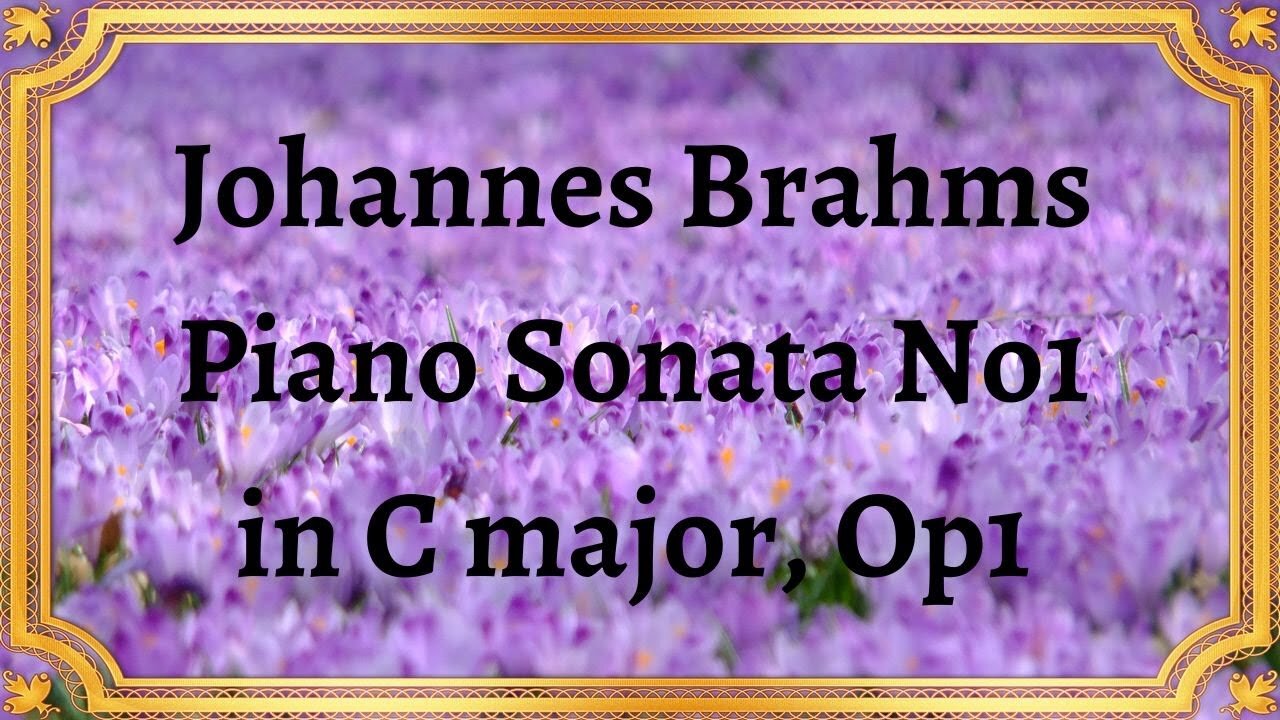Premium Only Content

Johannes Brahms Piano Sonata No1 in C major, Op1
Publication date 1949
Ray Lev
Johannes Brahms' Piano Sonata No. 1 in C Major, Op. 1, stands as a testament to the composer's genius and marks an important milestone in his musical career.
Composed in 1853, Brahms' Piano Sonata No. 1 holds immense historical significance as it marks his official debut as a composer. This monumental work reflects Brahms' admiration for the classical masters, particularly Ludwig van Beethoven. Brahms was aware of the weight of this composition, which is evident in the careful craftsmanship and depth of expression woven throughout the sonata.
The Piano Sonata No. 1 is a four-movement work, adhering to the traditional structure of classical piano sonatas.
Allegro: The opening movement sets a grand and majestic tone, characterized by its rich harmonic progressions and robust melodies. Brahms' masterful interplay between bold chords and delicate passages creates a sense of tension and release, capturing the listener's attention from the first notes.
Andante: The second movement introduces a more intimate and introspective atmosphere. Brahms' gift for lyricism shines through in this movement, as he crafts tender melodies and explores a wide range of emotional nuances. The music flows with a sense of tranquility and contemplation, inviting the listener to delve deeper into the sonic journey.
Scherzo: The third movement brings a burst of energy and playfulness, showcasing Brahms' skill in crafting lively and rhythmic motifs. The Scherzo dances with vitality and showcases Brahms' ability to seamlessly blend technical virtuosity with musical expression, captivating the audience with its infectious spirit.
Finale: The finale is a triumphant and exhilarating conclusion to the sonata. Brahms unleashes his mastery of counterpoint and thematic development, weaving together various motifs and creating a sense of grandeur and resolution. The movement builds to an electrifying climax, leaving the listener in awe of Brahms' compositional prowess.
Brahms' Piano Sonata No. 1 is a composition that embodies a wide range of emotions, from boldness and strength to introspection and contemplation. The sonata serves as a window into Brahms' complex and profound musical mind, with moments of melancholy, exuberance, and everything in between. It is a testament to Brahms' ability to evoke powerful emotions and resonate with listeners on a deep and personal level.
Johannes Brahms' Piano Sonata No. 1 in C Major, Op. 1, stands as a remarkable testament to the composer's extraordinary talent and artistic vision. Its historical significance, intricate musical structure, and emotional depth continue to captivate audiences today. By exploring the majestic melodies, expressive nuances, and historical context of Brahms' opus, we gain a deeper appreciation for the brilliance of Piano Sonata No. 1. Prepare to be enthralled by Brahms' rich musical tapestry and experience the profound beauty that has stood the test of time.
-
 20:26
20:26
Classical music_Music Inspiration
1 month agoJohann Sebastian Bach Orchestral Suite No. 2 in B minor, BWV 1066
862 -
 LIVE
LIVE
Badlands Media
9 hours agoBadlands Daily: July 28, 2025
5,768 watching -
 LIVE
LIVE
JuicyJohns
2 hours ago🟢#1 REBIRTH PLAYER 10.2+ KD🟢 !loadout
120 watching -
 LIVE
LIVE
Wendy Bell Radio
6 hours agoDemocrats Are As Fake As Russian Collusion
10,325 watching -
 48:34
48:34
Randi Hipper
1 hour agoBITCOIN TAKES OVER WALL STREET AS IT NEARS ALL TIME HIGHS
6.28K -
 57:51
57:51
MTNTOUGH Podcast w/ Dustin Diefenderfer
9 hours agoSam Mackey: From Juvenile Hall to a New Start in the Military | MTNPOD #126
6.48K -
 LIVE
LIVE
Matt Kohrs
12 hours agoMarket Open: New Highs, Breaking Trade News & Tech Earnings Report || Live Trading
665 watching -
 1:08:41
1:08:41
JULIE GREEN MINISTRIES
3 hours agoUNPRECEDENTED CHANGE IS COMING TO THE TAX SYSTEM IN THE UNITED STATES
109K162 -
 1:21:44
1:21:44
Chicks On The Right
5 hours agoPot-Banging for Gaza? Sydney Sweeney Backlash & Harry Enten UNLOADS on Candace | Chicks on the Right
25K10 -
 1:08:18
1:08:18
Game On!
19 hours agoAre The Colts a SERIOUS Super Bowl Contender?
27.1K